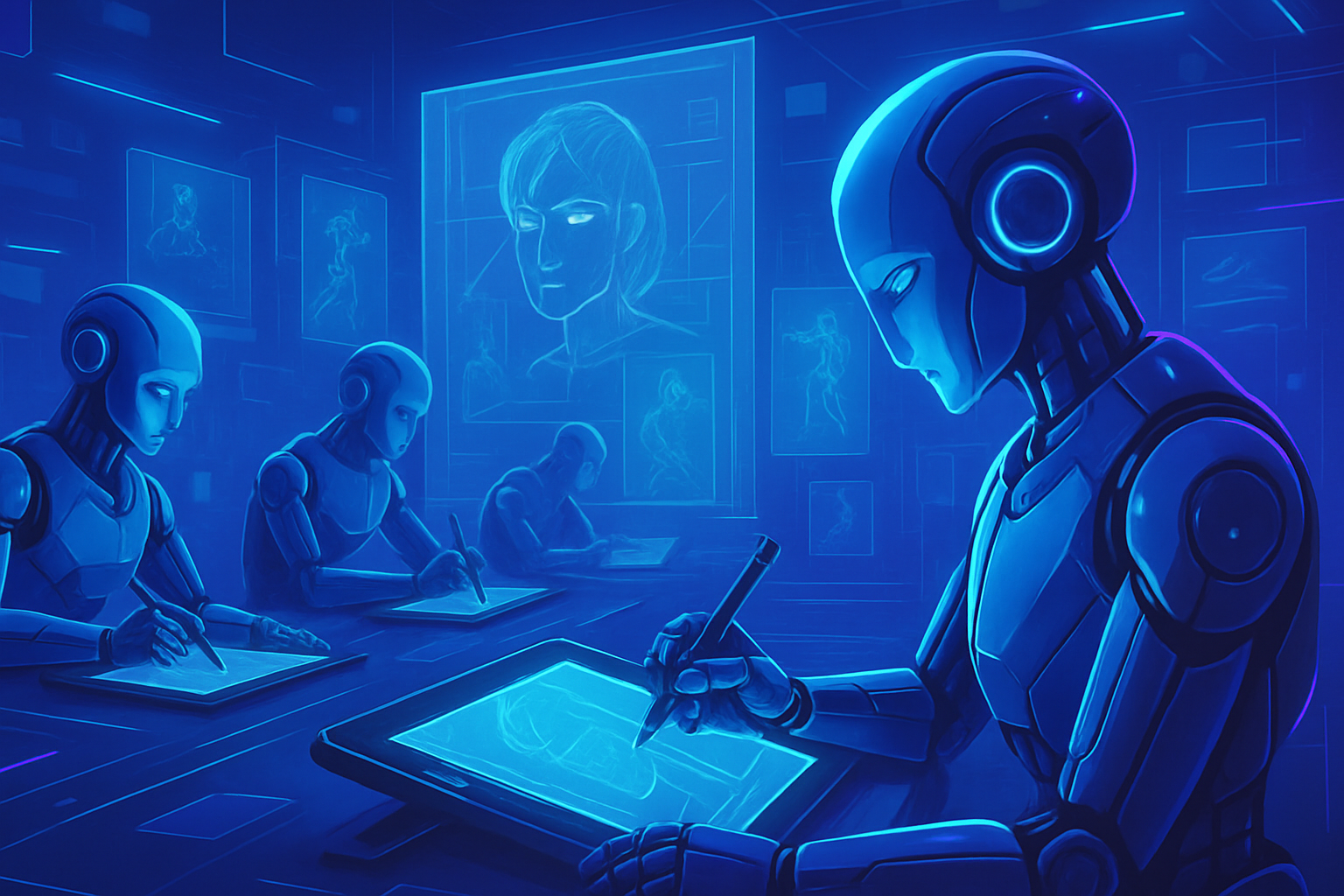The integration of an artificial intelligence capable of sketching like a human redefines the collaboration between man and machine. The challenges of visual expression require systems capable of thinking iteratively and creatively. The innovation of SketchAgent emerges as a solution, allowing for more fluid and intuitive communication. A system that adapts to every stroke of the pencil will offer unprecedented possibilities for interaction. This advancement promises to revolutionize our way of conceiving visual ideas.
Learning Artificial Intelligence Models
Researchers from the MIT Computer Science and Artificial Intelligence Laboratory (CSAIL) and Stanford University are developing an innovative system: SketchAgent. This model aims to teach artificial intelligences the ability to sketch similarly to humans. Instead of creating static images, this system offers an iterative approach, utilizing the drawing process stroke by stroke.
How SketchAgent Works
SketchAgent uses a multimodal language model, assimilating both textual and visual data. By providing natural language instructions, the AI produces sketches in a matter of seconds. For example, the AI can draw a house, whether autonomously or in collaboration with a human. This model allows for drawing by breaking down each element, thereby contributing to the intended representation.
Assessment of the AI’s Drawing Capabilities
The capabilities of SketchAgent have been tested through sketches of various concepts such as a robot or a snowflake. The results demonstrate a more fluid communication between the user and the AI. Research has led to a tool that could revolutionize teaching and visualization of complex concepts. The system is inspired by a sketch language, where each stroke is numbered, facilitating generalization to new concepts.
Collaboration and Interaction
A fundamental aspect of SketchAgent lies in its ability to work in concert with human users. The collaborative process allows for the creation of more refined drawings thanks to human input. Experiments have revealed that the strokes generated by the AI are essential to the coherence of the final sketch. For example, a drawing of a sailboat loses all recognition if the strokes corresponding to the mast are removed.
Technology and Models Involved
Different multimodal language models have been tested to evaluate their effectiveness in creating sketches. The default model, Claude 3.5 Sonnet, surpassed others like GPT-4o, setting new standards for the quality of vector graphics. The results indicate a unique contribution to the processing and generation of visual information.
Limitations and Future Perspectives
Despite its promising advancements, SketchAgent has limitations. The drawings remain primarily simplified representations, often in the form of stick figures or doodles. The AI struggles to execute complex figures or understand the nuances of human intentions, as shown by the case of a grotesque drawing of a two-headed rabbit. A future improvement could lie in training on synthetic data from diffusion models.
Researchers are looking to refine the user interface for easier interaction with these learning models. Although SketchAgent does not yet compete with professional artists, it opens a promising dialogue for human-AI collaboration in the creative field.
To learn more about the latest news surrounding advances in AI, some sources suggest a growing interest in educational and artistic applications. Practical application examples include teaching complex concepts within education and creative workshops.
Similar projects, such as an AI analyzing the world through the innocence of an infant, reveal the potential of AI learning in various contexts. Applications of this type could enrich the learning and interaction experience with AI systems while encouraging a deeper understanding of visualizing ideas. It is evident that AI is transforming our way of conceiving and drawing ideas.
Frequently Asked Questions
How does the SketchAgent system learn to sketch like a human?
SketchAgent uses a multimodal language model that combines text and images. It translates the instructions given in natural language into sequences of pencil strokes on a grid, learning to draw step by step without requiring training on specific data.
What is the difference between SketchAgent and other image generation models like DALL-E?
Unlike DALL-E, which does not capture the creative and spontaneous process of drawing, SketchAgent models drawing as a series of strokes, making the result more fluid and human-like.
Can SketchAgent draw abstract concepts?
Yes, SketchAgent has shown its ability to create abstract drawings of various concepts such as robots, butterflies, and even famous structures like the Sydney Opera House.
Can the SketchAgent system collaborate effectively with a human user?
Yes, during testing, it has been proven that SketchAgent operates in collaborative mode, leveraging human contributions to create more recognizable and coherent drawings.
What types of drawings does SketchAgent struggle to produce?
Although promising, SketchAgent still struggles with more complex drawings such as logos, detailed human figures, and specific animals, often resulting in simplistic or incorrect representations.
How can SketchAgent’s performance be improved for educational applications?
Researchers are considering enhancing SketchAgent’s drawing skills by relying on synthetic data derived from diffusion models and refining its user interface for simplified interaction.
What are the potential applications of SketchAgent in education?
SketchAgent could be used as an interactive art tool to help teachers diagram complex concepts or provide quick drawing lessons, thereby facilitating visual learning.
Does SketchAgent require prior training in writing and illustration?
No, SketchAgent was designed to learn from basic examples of drawings; it does not require specific prior training in drawing to start functioning.






